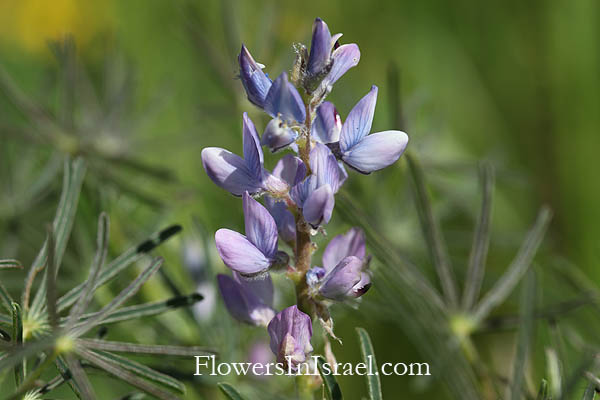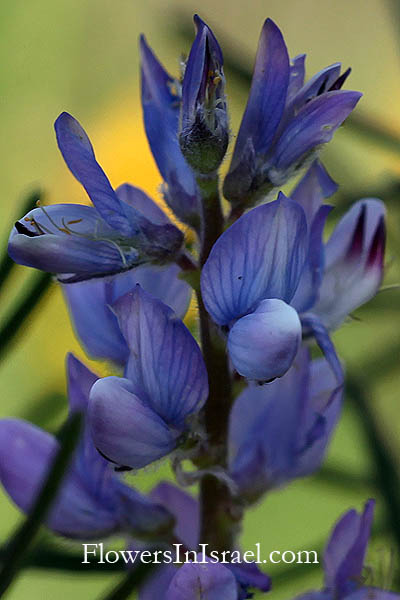Hebrew: תורמוס צר-עלים, Arabic: الترمس الضيق الأوراق
| Scientific name: | Lupinus angustifolius L. | |
| Common name: | Wild lupin, Narrow-leaved lupin | |
| Hebrew name: | תורמוס צר-עלים | |
| Arabic name: | الترمس الضيق الأوراق | |
| Family: | Papilionaceae, פרפרניים |

|
| Life form: | Therophyte, annual | |
| Stems: | 20-80 cm high | |
| Leaves: | Alternate, compound, digitate, leaflets linear to linear-spathulate, glabrous above, sparsely villous beneath | |
| inflorescence: | Racemes 10-20 cm, flowers alternate | |
| Flowers: | Dark blue, violet; peduncle1-3 cm | |
| Fruits / pods: | Legume shortly hirsute; seeds 4-6, ellipsoid | |
| Flowering Period: | March, April | |
| Habitat: | Batha, Phrygana | |
| Distribution: | Mediterranean Woodlands and Shrublands, Semi-steppe shrublands, Montane vegetation of Mt. Hermon | |
| Chorotype: | Mediterranean | |
| Summer shedding: | Ephemeral | |
| Protected Flower, צמח מוגן: | Yes |

Location: Bene Zion Nature Reserve Derivation of the botanical name: Lupinus, Latin lupus, "wolf," alluding to the belief that these plants destroyed the fertility of the soil, which is the oppposite of the truth; the seeds are eaten in eastern Mediterranean countries. angustifolius, narrow-leaved. The Hebrew name: תורמוס, turmos, from Greek: thermos (= Lupinus albus), which is probably identical with thermos (= warm, hot), which is related to therme (=heat).
|